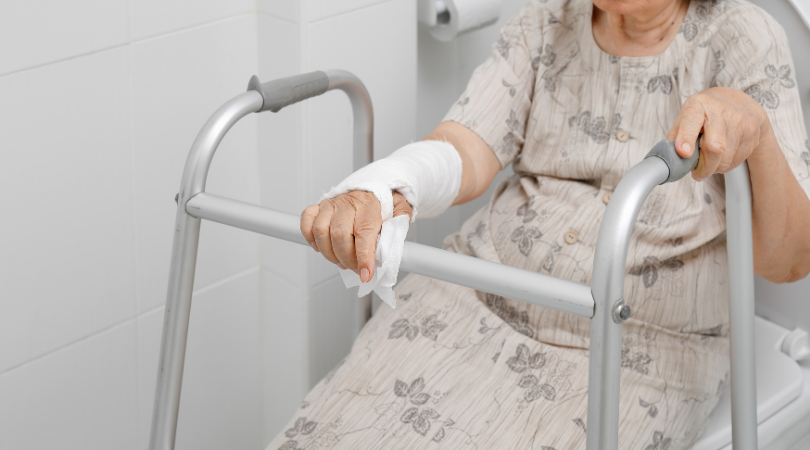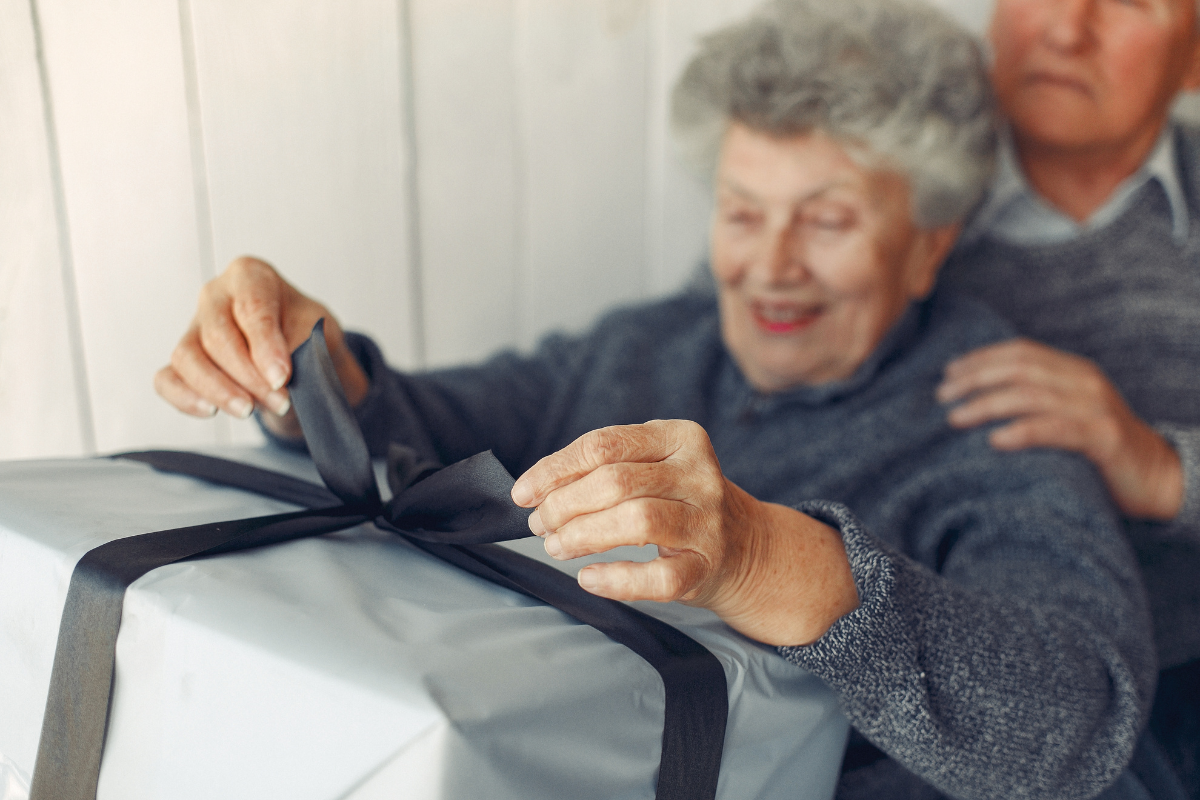How to Help an Adult with Toileting

As your loved one ages or becomes ill, they may need assistance with using the toilet. This may seem intimidating, but if you approach it with a matter-of-fact demeanor, it will be easier for both of you.
How to Prepare
As your loved one begins to need more help, you will need to set up their home to safely meet their needs. Some things that will come in handy when you help an adult with toileting include:
- Handrails near the toilet
- A removable raised toilet seat
- A commode, bedpan, or urinal
- Waterproof mattress pads
- Incontinence pads and briefs
You will also want to learn your loved one’s routine to allow plenty of time for you to help them move to the bathroom or commode without rushing. Make regular trips to the bathroom every few hours throughout the day, especially after meals. Be sure to wash your hands before and after toileting and wear gloves throughout.

How to Help an Adult Use a Toilet or Commode
It is important that family caregivers keep safety in mind when assisting their loved one with toileting. Your loved one should do as much of the work of getting into position as possible. Avoid lifting them or having them pull on you as this can increase the risk of injury to both you and your loved one. Instead, place your hands on their hips and waist to maintain stability. Bend your knees as they sit down or lift themselves back up and avoid pulling on their arms.
Whenever you help an adult with toileting, have patience and keep a light, down-to-earth perspective. Good communication is helpful, so be sure to talk through the process as you move through the steps.
Walk slowly together to the bathroom or commode. Once they are close to it, ask your loved one to turn around so the toilet is directly behind them. They should place their hands on your forearms and slowly lower themselves to the toilet seat.
You may need to provide additional support by passing them toilet paper or wet wipes to clean themselves or by doing the cleaning yourself. Make sure their hands are clean afterwards.
When they are ready to get up, have them scoot forward a bit and place their hands back on your forearms before they lift themselves up. Keep your hands on their waist and bend your knees.

Helping Someone Use a Bedpan
If getting out of bed is difficult for your loved one, they may need your assistance in using a bedpan. Begin by making sure their privacy is protected by closing doors or curtains. Let them know that you’ll now be helping them with the bedpan.
If the bed is adjustable, raise the top of the bed so your loved one’s head and back are raised. If it is not an adjustable bed, have them sit up or help them sit up. Add pillows to support them so their back stays in an upright position. Place a towel over their lap to maintain dignity.
If the person can lift up, slide an incontinence pad underneath them to catch any spills. Adjust their clothing as needed. Then, as you support their lower back, slide the bedpan underneath them.
If they can’t lift up, roll them onto their side and adjust their clothing. Then slide the incontinence pad and bedpan into place and roll them back onto the bedpan.
Once finished, have them lift up, so you can slide the bedpan out while supporting their lower back. If they are unable to lift themselves up, roll them back onto the side to slide the bedpan out.
Cover the bedpan with a towel or incontinence pad and put it off to the side where it can’t be knocked over. Then clean the person with toilet paper or wet wipes. Dry them gently.
Help them into a comfortable position and make sure they are covered with a sheet. Then clean their hands. You can use a tub of warm soapy water to do this or you can use wet wipes.
Adjust their clothing back into place and make sure they are comfortable in bed.
Empty the bedpan in a toilet and be sure to wash it in very hot water. Dry it and return it to a handy place for ease of use.
While getting used to providing (and receiving) this type of assistance takes some getting used to, maintaining a patient and positive manner will make it easier for both of you.
Crossroads Hospice & Palliative Care provides assistance with patients and families facing serious and terminal illnesses. To learn more about our services, please call 1-888-564-3405.
If you found this information helpful, please share it with your network and community.
Copyright © 2021 Crossroads Hospice & Palliative Care. All rights reserved.




